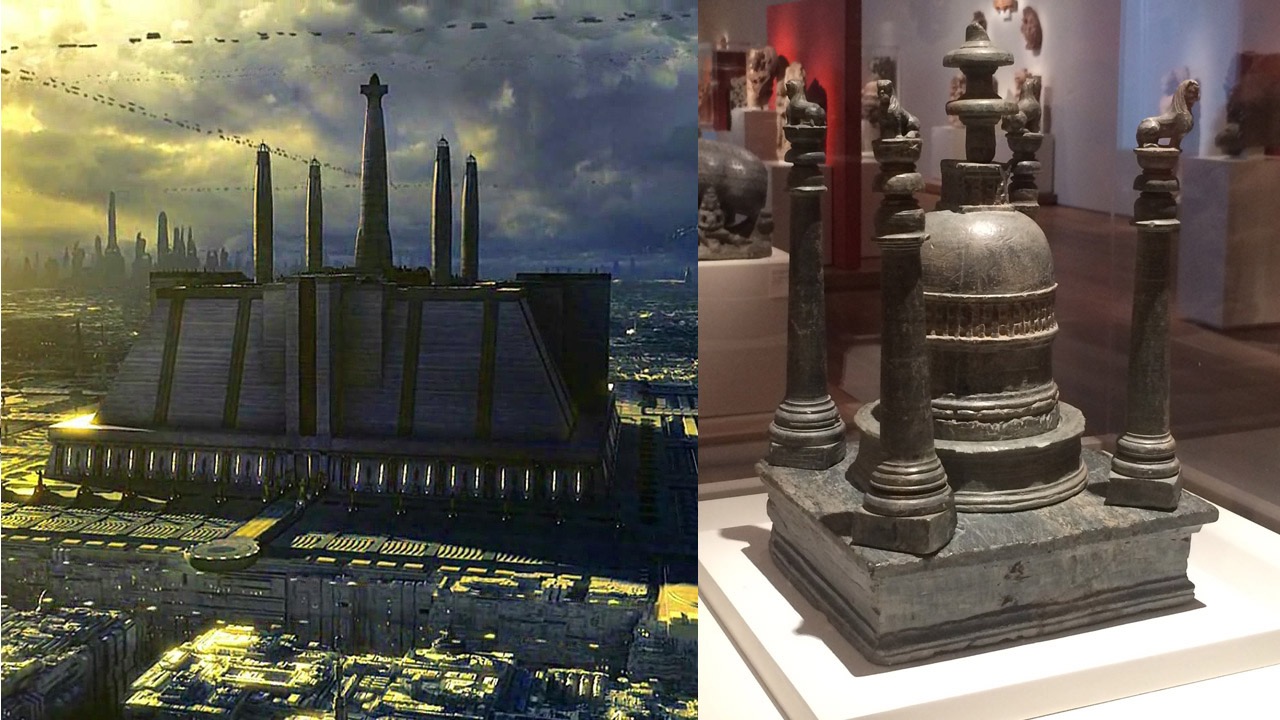Welcome back to the Ancient Art Podcast. I’m Lucas Livingston. We’re picking up where we left off with the Gandharan Stupa Reliquary in the Art Institute of Chicago. You’ll want to be sure to check out that episode first if you’re not already familiar with what a Gandharan stupa reliquary is. This episode tells us a little bit more about its time period, the four pillars around the dome, and maybe a little something else fun.
[AFG_gallery id=’1′]
By the time of our stupa’s manufacture, Gandharan was under Kushan rule, a Central Asian culture that had moved in to Gandhara during the 1st century. While the Kushans widely promoted the Buddhist faith, they supported the artistic influences of centuries of local Hellenistic Greek rule, characterizing a style we call Greco-Buddhist art. Remember, we had talked last time about how this region was under Greek rule for centuries following the conquest of Alexander the Great.
The four pillars capped by fierce lions face the four cardinal directions and roar out the teachings of Buddha. They also pay homage to the famous lion pillars and stupas erected by Ashoka the Great some centuries earlier. You remember Ashoka, the Indian Mauryan Emperor we met last time, who ruled in the 3rd century BC. Some of you might recognize the most famous Lion Capital of Ashoka, which comes from the sacred site of Sarnath. [Creepy music] Um, no, wrong Sarnath. [Pleasant music] That’s better. The sacred site where Buddha gave his first sermon in a deer park. The Lion Capital of Ashoka also served as the basis for the National Emblem of India.
There’s an intriguing resemblance between the Gandharan stupa architecture, Ashoka’s Lion Capitals, and the architecture of the ancient Achaemenid Persian site of Persepolis. We explored Persepolis in depth in episodes 10, 11, and 12 of the Ancient Art Podcast in relationship to the Athenian Acropolis. It’s less widely researched than the Persian-Greek connection, but I don’t doubt that the Persian emperors conscripted Gandharan vassals to help build Persepolis, much as they did with the Greeks under their rule. And in turn, this basically taught Gandharan architects how to build like a good Persian, a trade that they then took back home to Gandhara and perhaps also to the Indian Mauryan Empire of Ashoka.
But looking at this incredible multi-columned temple-like object and all this talk about Ashoka might have you thinking about another conspicuous comparison — the Jedi Temple on Coruscant, of course, and Jedi Padawan Ahsoka Tano. While you likely wouldn’t confuse Ashoka the Great and Ahsoka Tano even in a dark alley, frankly, I think the resemblance between the two structures is uncanny. I would not be in the least bit surprised if the designers of Coruscant’s Jedi Temple were looking at stupa architecture for influence. And the relationship between Star Wars and Buddhism is far from superficial. The Star Wars universe draws heavily from Buddhism and more broadly from South and East Asian faiths, cultures, traditions, and philosophies. Alas, that’s something we don’t have time to get into, so you’ll just have to research that on your own.
Thanks for taking the time to explore the Art Institute’s Gandharan Stupa Reliquary with me. Don’t forget to visit ancientartpodcast.org for detailed credits and more. I hope to see you next time on the Ancient Art Podcast.


One Reply to “66: Star Wars and Stupas”